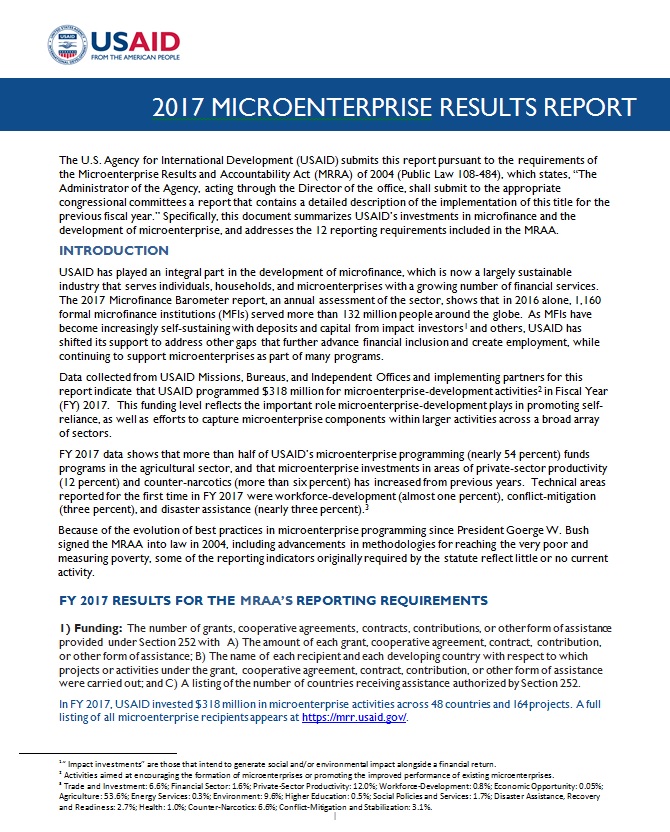Speeches Shim
2017 Microenterprise Results Report
The U.S. Agency for International Development (USAID) submits this report pursuant to the requirements of the Microenterprise Results and Accountability Act (MRRA) of 2004 (Public Law 108-484), which states, “The Administrator of the Agency, acting through the Director of the office, shall submit to the appropriate congressional committees a report that contains a detailed description of the implementation of this title for the previous fiscal year.” Specifically, this document summarizes USAID’s investments in microfinance and the development of microenterprise, and addresses the 12 reporting requirements included in the MRAA.
Introduction
USAID has played an integral part in the development of microfinance, which is now a largely sustainable industry that serves individuals, households, and microenterprises with a growing number of financial services. The 2017 Microfinance Barometer report, an annual assessment of the sector, shows that in 2016 alone, 1,160 formal microfinance institutions (MFIs) served more than 132 million people around the globe. As MFIs have become increasingly self-sustaining with deposits and capital from impact investors and others, USAID has shifted its support to address other gaps that further advance financial inclusion and create employment, while continuing to support microenterprises as part of many programs.
Data collected from USAID Missions, Bureaus, and Independent Offices and implementing partners for this report indicate that USAID programmed $318 million for microenterprise-development activities in Fiscal Year (FY) 2017. This funding level reflects the important role microenterprise-development plays in promoting self-reliance, as well as efforts to capture microenterprise components within larger activities across a broad array of sectors.
FY 2017 data shows that more than half of USAID’s microenterprise programming (nearly 54 percent) funds programs in the agricultural sector, and that microenterprise investments in areas of private-sector productivity (12 percent) and counter-narcotics (more than six percent) has increased from previous years. Technical areas reported for the first time in FY 2017 were workforce-development (almost one percent), conflict-mitigation (three percent), and disaster assistance (nearly three percent).
Because of the evolution of best practices in microenterprise programming since President Goerge W. Bush signed the MRAA into law in 2004, including advancements in methodologies for reaching the very poor and measuring poverty, some of the reporting indicators originally required by the statute reflect little or no current activity.


Comment
Make a general inquiry or suggest an improvement.